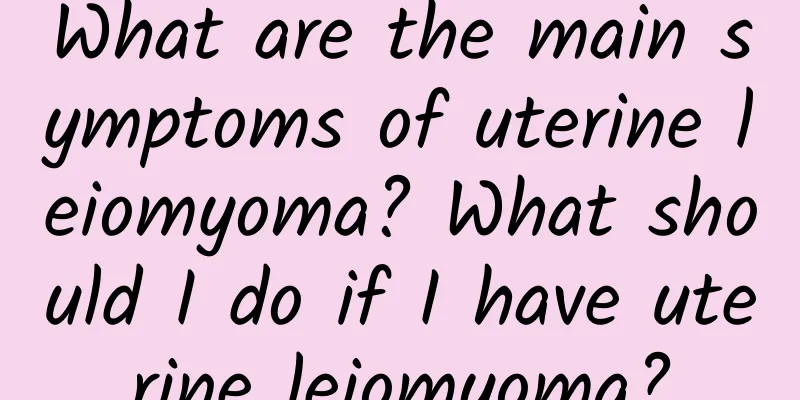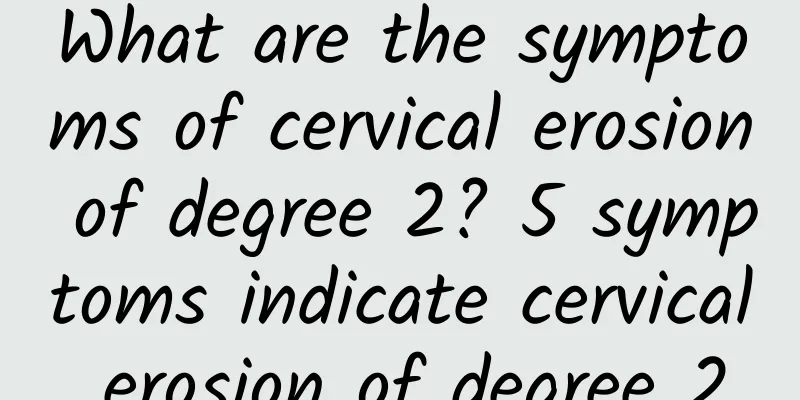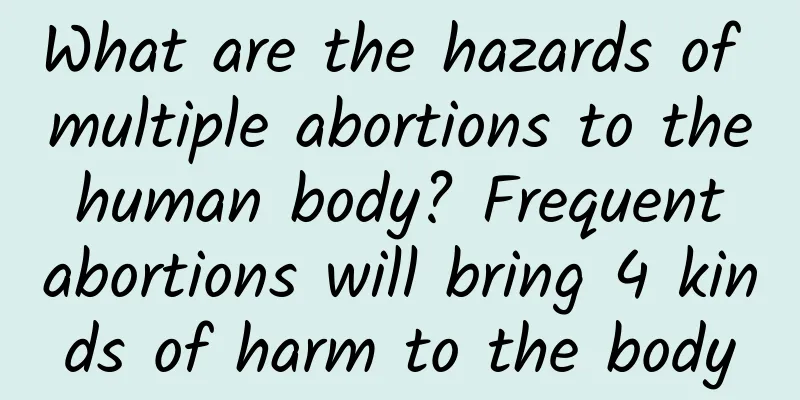What are the main symptoms of uterine leiomyoma? What should I do if I have uterine leiomyoma?

|
Uterine leiomyoma, also known as uterine fibroids, is the most common benign tumor of the female genitalia. Most cases are asymptomatic, but a few may present with vaginal bleeding, abdominal tumors, and compression symptoms. Multiple uterine fibroids are common in cases of pedicle torsion or other conditions that cause pain. The clinical symptoms of uterine leiomyoma are as follows: 1. Changes in the menstrual cycle: Changes in the menstrual cycle are the most common symptoms, manifested as shortened menstrual cycle, increased menstrual volume, prolonged menstruation, irregular vaginal bleeding, etc. 2. Abdominal mass: Abdominal swelling, lower abdominal swelling, accompanied by a feeling of falling. 3. Increased vaginal discharge: Increased vaginal discharge, sometimes with a large amount of purulent and bloody discharge and necrotic tissue discharge with a foul odor. 4. Abdominal pain and body pain: Generally, patients do not have abdominal pain, but often have lower abdominal swelling, back pain, etc. When the pedicle of the subserosal fibroid is twisted, uterine leiomyoma may cause acute abdominal pain; when the fibroid turns red, the abdominal pain is severe and accompanied by fever. 5. Tissue compression symptoms: When the fibroid grows forward or backward, it can compress the bladder, urethra or rectum, causing frequent urination, dysuria, urinary retention or constipation. When the fibroid grows to both sides, it will form a broad ligament fibroid, compressing the ureter or hydronephrosis; if it compresses the pelvic blood vessels and lymphatic vessels, it will cause lower limb edema. 6. May cause infertility: Fibroids compress the fallopian tubes and cause them to twist, or deform the uterine cavity, hindering the fertilized egg from implanting and leading to infertility. 7. Secondary anemia: If the patient has excessive menstruation for a long time, it may lead to secondary anemia, with symptoms such as general fatigue, pale complexion, shortness of breath, and palpitations. 8. Hypoglycemia: Hypoglycemia with uterine leiomyoma is rare. The main symptoms are low fasting blood sugar, loss of consciousness and shock. The symptoms can disappear completely after glucose injection. After tumor resection, the symptoms of hypoglycemia disappear completely. |
<<: What are uterine leiomyoma and what are the symptoms of uterine leiomyoma
>>: What is uterine leiomyoma? Is increased vaginal discharge a uterine leiomyoma?
Recommend
What is the cause of cervical erosion?
Cervical erosion is not a real "disease"...
What are the common symptoms of cervicitis?
Cervicitis can be clinically divided into acute a...
With just a towel, Akemi Katsuki teaches you how to flatten your belly and lift your butt
Akemi has a nice and toned body, which she achiev...
My period has stopped for a few months, what's going on?
If your period comes back after a few months of a...
What does the ectopic pregnancy test stick show? Check with B-ultrasound
We all know that after pregnancy, the pregnancy t...
What causes vulvar itching?
What causes vulvar itching? Vulvar itching can be...
How to take good care of dysmenorrhea in your life
Dysmenorrhea seriously affects the quality of lif...
Experts analyze the causes of dysmenorrhea
It is good for women to know some knowledge about...
Spring Festival diet hides the risk of obesity and chronic diseases! Master the "Three Lows and One High" trick to avoid worries
The Lunar New Year is approaching, and it is a gr...
Is vulvar itching hereditary?
Vulvar pruritus is a common gynecological disease...
What medicine to use for breast nodules and uterine fibroids What should not be eaten for breast nodules and uterine fibroids
What medicine to use for breast nodules and uteri...
13 tips to boost metabolism and double your weight loss effect
Did you know? To successfully lose weight, in add...
Young women should also be wary of cervical erosion
Cervical erosion is common in women of childbeari...
How effective is drug treatment for endometrial tuberculosis?
Choosing appropriate drugs for the treatment of e...
What causes intrauterine adhesions?
The cause of intrauterine adhesions is still uncl...









